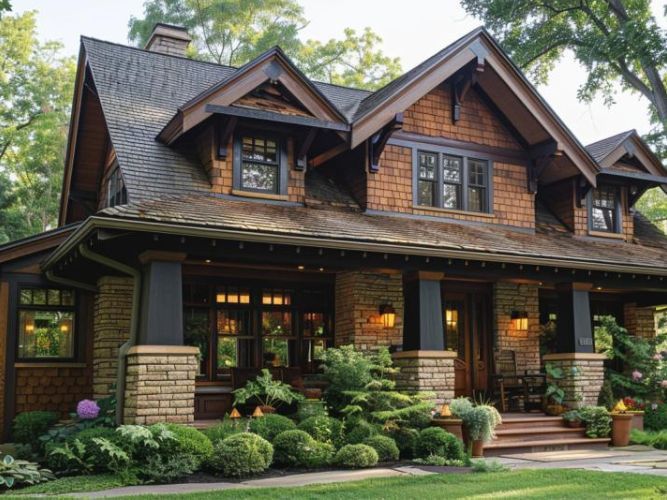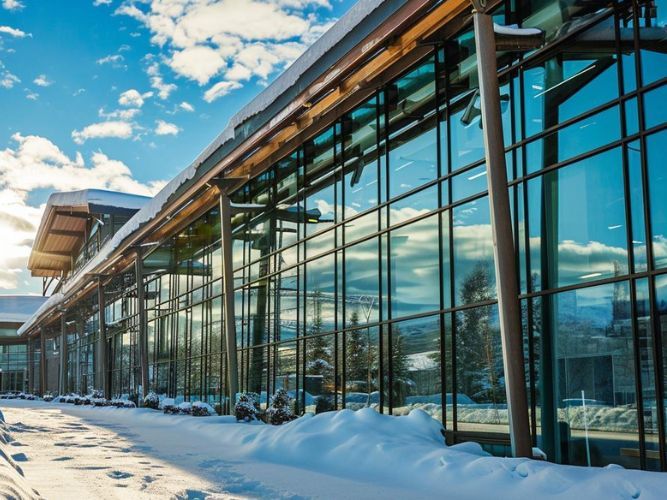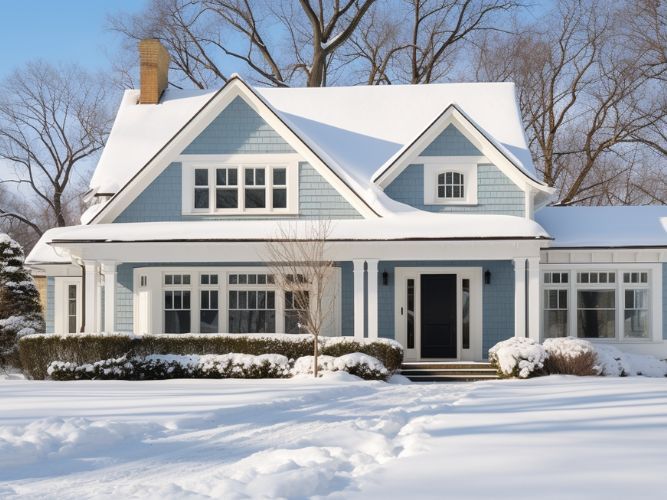What is the Average Cost of a Roof Installation in Rock Falls, IL?
Homeowners or business owners from Rock Falls, IL, who are looking into roof installation services need to prepare to pay $8,000 on average for this service. However, this figure isn’t definite; prices can start as low as $4,000 and go up to $14,000. For those looking to install a larger or more luxurious roof, costs can climb even further, reaching up to $47,000.
You can’t say that any house or commercial building is completely finished without a roof. A well-installed roof can last for 50 years or more if done correctly. However, quality comes with a price tag. And what is the average cost of a roof installation in Rock Falls, IL?
Several elements determine the final price, including the roof’s dimensions, the type of roofing materials you choose, and the costs associated with labor. Residents of Rock Fall deserve to know all the potential costs they will encounter when installing a roof on their property.
Being informed about potential costs can help avoid surprises during installation. In this guide, you’ll find detailed insights into the average prices you should anticipate, paving the way for effective budgeting and planning. Let’s see everything you have to include in your budget calculations.
What Influences Roof Installation Costs
Installing a new roof or replacing an old one is complicated. There is more to the investment than the installation process itself. The final price includes various expenses that can increase your total depending on what you want done. The total expenses usually include:
- Type of roofing material: Asphalt shingles are a more cost-effective roofing choice, while metal roofs and tiles can significantly increase costs. The selection of roofing material impacts the upfront price and the roof’s durability and maintenance requirements.
- Roof size and complexity: A larger roof requires more materials and labor, while steep pitches or unique designs can complicate installation. If your home has multiple levels or intricate architectural features, expect higher labor costs due to the additional skill needed for safe and effective installation.
- Labor costs: In Rock Falls, you should expect to pay around $45 to $75 per hour. Remember that less expensive labor may not always yield the best results, so balance cost with the contractor’s reputation and expertise.
- Removal of old roofing materials: If you need to remove existing roofing materials before installing the new roof, this will add to your overall costs. The complexity of the removal process can depend on the type of materials you’re removing and how many layers are present. Some roofing systems allow new materials to be installed directly over the old ones, saving you costs and time.
- Additional features: Your roofing project may involve additional features affecting the final price. Installing new gutters or upgrading insulation and ventilation systems might be necessary to optimize performance. For example, if you want seamless gutters on your new roof, they cost around $8 to $28 per linear foot.
- Permits and Inspections: Typically, permits can range from $50 to $200, depending on the complexity of the project and local regulations. Inspections may incur additional fees, often around $100 per visit. It’s wise to check with the local building department for specific requirements and associated costs.
Average Cost Breakdown of Roof Installation Costs
The materials are the highest cost of a roof installation project, and your project costs will vary significantly based on the type of materials you choose. Here’s a breakdown of the average costs for common roofing materials in Rock Falls:
- Asphalt Shingles: Almost 75% of all roofs use asphalt shingles because they are so affordable. They typically cost $5 to $8 per square foot. That price usually includes the roofing materials and installation. Asphalt shingles have a lifespan of about 20 to 30 years, making them a practical option for many home and business owners.
- Metal Roofing: Combining durability and energy-saving benefits, metal roofing costs between $7 and $11 per square foot for materials and installation. Despite a higher initial cost, metal roofs can last 40 to 70 years and need less maintenance than other roofing options.
- Tile Roofing: Tile roofs provide a distinctive look and exceptional longevity, with costs ranging from $2 to $20 per square foot, depending on the type and style. Tile can last well over 50 years, even under extreme weather conditions. Due to their weight, tile roofs may require structural reinforcement, adding to the total expense.
- Wood Shakes and Shingles: These materials bring a natural aesthetic to your home but require more maintenance. The average cost of wood shakes and shingles is about $10 to $12 per square foot, including installation. They generally last about 30 years, but exposure to moisture and pests can shorten their lifespan.
- Solar Shingles: Solar shingles integrate solar technology with traditional roofing materials as a modern roofing option. The cost is significantly higher, and the cost typically starts at $25 per square foot for materials and installation. However, they can provide savings on energy bills and may qualify for tax credits, potentially offsetting initial costs.
Best Times for Roof Installation
Weather significantly impacts roofing projects, and understanding seasonal conditions in Rock Falls, IL, can help you decide the best time for installation. Spring and early fall usually present the most favorable weather for roofing work.
These seasons typically have milder weather and less rainfall. Late spring, particularly May, is ideal since the ground has thawed, and humidity levels are manageable. Similarly, September and October offer stable weather conditions, making them another excellent choice for installation.
Avoid scheduling roof work during the winter months. Winter weather, including cold temperatures and snow, can disrupt projects and compromise installation quality. Summer can also pose challenges due to extreme heat, which may affect the workers and the roofing materials. Keeping an eye on the weather forecast and selecting a time frame within the spring or early fall months can lead to smoother installations.
Off-Peak vs. Peak Season Pricing
Demand for roofing services spikes during peak seasons, such as late spring and summer. As a result, contractors may raise their rates. Booking your roof installation during off-peak times, like late fall, can provide significant savings, as many contractors offer discounts or reduced rates when business is slower.
Scheduling your project during the off-peak season helps lower costs and increases the chances of securing a contractor’s attention and availability. During slower seasons, contractors often provide more personalized service and flexible scheduling. Moreover, the quality of work may improve, as workers can take the time they need without rushing to meet tight deadlines.
Choosing The Right Roofing Contractor
Selecting the right roofing contractor affects your home’s safety and value. Start by gathering a list of potential contractors in your area. Check their licenses and insurance to ensure they comply with state regulations. A legitimate contractor should have liability insurance and workers’ compensation coverage to protect you from financial liability in case of accidents.
Next, ask for references and follow up with previous clients to gauge their satisfaction with the contractor’s work. Be sure to ask specific questions such as:
- How well the contractor communicated
- Whether they finished the project on time
- If any unexpected costs arose
Always ask for a written estimate that details materials and labor costs to prevent surprises once the project is underway. A reliable contractor will also provide a warranty for their work. Feel free to ask them about their warranty policy and what it covers to protect yourself in case of future issues.
Red Flags to Watch Out For
While searching for a roofing contractor, be aware of warning signs that may indicate an unreliable service. Avoid contractors who pressure you into making quick decisions or those who ask for full payment upfront.
These tactics often point to potential scams. In addition, check online reviews and testimonials from previous customers. Consistently negative feedback or a lack of reviews can indicate poor workmanship or customer service.
Another red flag is a contractor who cannot provide a physical address or appears unprofessional in their communication. If they fail to answer your questions thoroughly or seem evasive about their credentials, it’s best to continue your search. Always trust your instincts; if something feels off, it probably is.
Find The Best Roofing Company in Rock Falls, IL
Installing a new roof on your house or commercial building is an expensive but necessary investment. The price of this service can vary depending on several elements, starting with the roofing material and down to the season you want to install the roof. Rock Falls residents have a right to know what a roof installation will cost them before they start the project.
That’s why Boss Roofing – Siding Experts always gives you a detailed estimate with transparent pricing. We include every expense and don’t have hidden fees. Our experienced roofers will dedicate themselves to providing you with the best quality product and service from start to finish.
See why we are the most reliable roofing company – call us today and experience the difference!
FAQ
How much do roofing materials cost on average in Rock Falls, IL?
In Rock Falls, IL, the average cost for roofing materials typically ranges from $5 to $20 per square foot. Factors influencing the price include the type of roofing material. Terracotta tiles are much more expensive than asphalt shingles, for example. Additional costs may arise from labor, disposal of old materials, and any repairs to the underlying structure.
What is the timeframe for a typical roof installation?
A standard roof installation in Rock Falls generally takes one to three days, depending on the roof’s size and complexity. Factors such as weather and material selection can affect the project’s duration.
For example, a straightforward asphalt shingle roof will take less time than a more intricate design. Always discuss the expected duration with your contractor before starting the project.
What does proper roof maintenance include?
To extend your roof’s lifespan, perform regular inspections every six months and clear debris from gutters and valleys. Immediately fix leaks or damage to prevent further issues. Trim overhanging branches to minimize wear and tear. Consider professional maintenance at least once a year to catch problems early.
Are there any warranties associated with roof installations?
Most roofing installations come with warranties that cover materials and workmanship. Manufacturer warranties typically last 20 to 50 years, depending on the material. Labor warranties usually range from one to ten years.
Always review the warranty specifics with your contractor and ensure you understand the coverage before signing any agreements. Keep documentation safe for future reference and claims.









